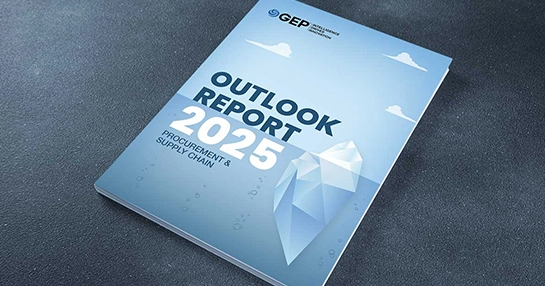
How Circular Procurement Drives Business Growth and Innovation
- Businesses must invest in circular procurement to drive growth, compliance, and competitive advantage.
- They can deploy strategies like Product-as-a-Service (PaaS) and supplier co-innovation to support sustainability goals.
- They should also leverage technology, including digital twins and AI, to scale circular procurement efficiently.
February 11, 2025 | Procurement Strategy
How do you plan to thrive in an increasingly competitive business environment? What’s your strategy to stay compliant as well as ahead of competition?
One of the ways is to invest in circular procurement.
With growing federal and state-level initiatives promoting sustainability—such as the U.S. EPA’s National Recycling Strategy and proposed extended producer responsibility (EPR) laws—circular procurement is becoming a critical focus for businesses. It is no longer just about reducing waste or designing for recyclability; it’s about meeting evolving regulatory standards, achieving carbon reduction targets, and securing long-term operational resilience in resource-constrained markets.
For procurement leaders, the challenge lies in moving beyond theoretical principles to implementing transformative strategies that scale across complex supply chains. By aligning processes with government sustainability frameworks, redefining value creation, and leveraging advanced technologies, organizations can position circular procurement as a driver of growth, compliance, and competitive differentiation.
Redefining Value: From Cost Savings to Value Creation
Circular procurement demands a shift in mindset—from short-term cost reductions to long-term value creation. This involves redefining how success is measured:
1. Circular ROI
Instead of focusing solely on upfront costs, calculate the return on investment over the product's entire lifecycle, including reduced disposal costs, extended product lifespans, and revenue from refurbished goods.
2. Non-Financial Metrics
Add resource efficiency (e.g., kilograms of virgin material avoided), carbon footprint reduction, and supplier innovation scores to procurement KPIs.
3. Internalizing Externalities
Quantify the environmental and social benefits of circular practices—like reduced landfill contributions or job creation in refurbishment industries—and integrate them into decision-making frameworks.
Advanced Circular Procurement Strategies
Circular procurement requires organizations to go beyond traditional models and embrace strategies that drive both sustainability and innovation. Several advanced strategies are essential for creating a circular economy within supply chains.
Product-as-a-Service (PaaS) Models
The Product-as-a-Service (PaaS) model represents a shift from product ownership to leasing or subscription-based services. In this model, suppliers retain ownership of the products, motivating them to design for longevity, repairability, and recyclability. For example, Philips’ "Lighting as a Service" enables customers to pay only for the light output, rather than purchasing fixtures. This model ensures that components are reused or recycled at the end of their lifecycle. Similarly, leasing office furniture or IT equipment promotes sustainability by extending the products' usable life, reducing waste, and encouraging more responsible consumption.
Supplier Co-Innovation
Supplier collaboration is a cornerstone of circular procurement. Engaging suppliers early in the design phase ensures that products are designed for modularity and recyclability. By co-developing solutions, organizations can align with their suppliers on sustainability goals and explore opportunities for innovation. This includes co-investing in research and development of sustainable materials, such as bio-based plastics, or closed-loop manufacturing systems that minimize resource consumption and waste. Supplier co-innovation fosters a shared vision of sustainability, accelerating the adoption of environmentally friendly practices across the supply chain.
Reverse Logistics Optimization
Reverse logistics focuses on recovering value from products at the end of their lifecycle through take-back, refurbishment, and recycling programs. By auditing supply chains and introducing take-back initiatives, companies can reclaim valuable resources from end-of-life products. Predictive analytics further enhances reverse logistics by forecasting returns and optimizing the flow of products back into the system. For example, electronics manufacturers that offer trade-in programs or furniture companies that refurbish returned items reduce waste while strengthening customer relationships. This process not only mitigates environmental impact but also creates new value streams for businesses.
Dynamic Material Sourcing
Dynamic material sourcing plays a crucial role in reducing dependency on virgin materials and promoting the use of secondary resources. By sourcing recycled materials from material recovery facilities and recyclers, companies can integrate reclaimed resources into their operations, thereby closing the loop of material consumption. This approach is facilitated by digital platforms that connect businesses with suppliers of recycled materials, making it easier to source materials such as recycled metals for manufacturing or reclaimed wood for construction projects. Dynamic sourcing reduces environmental impact, lowers costs, and supports the circular economy by ensuring materials are reused rather than discarded.
The Role of Technology in Scaling Circular Procurement
Technology is essential for advancing circular procurement at scale.
1. Digital Twins
Virtual replicas of physical products can simulate lifecycles and identify opportunities for reuse or recycling before production begins.
2. AI-Powered Supplier Insights
AI tools analyze vast datasets to assess supplier performance against circular criteria and recommend innovative partners.
3. Material Traceability Systems
Advanced traceability tools track materials throughout their lifecycle, ensuring compliance with regulations like the EU’s Circular Economy Action Plan.
4. Lifecycle Costing Platforms
Integrated platforms dynamically calculate lifecycle costs, including maintenance, repairs, and end-of-life residual value, helping teams prioritize circularity.
Circular Procurement as a Competitive Advantage
Circular procurement is not just a sustainability initiative—it’s a competitive differentiator:
● Regulatory Compliances
Stay ahead of tightening carbon neutrality and resource efficiency regulations.
● Brand Reputation
Strengthen brand perception among environmentally conscious stakeholders.
● Operational Resilience
Reduce exposure to raw material price volatility by sourcing secondary materials.
Organizations embedding circularity into core strategies gain a sustainable edge in resource-constrained markets.
A Call to Action for Procurement Leaders
Ready to move beyond basic sustainability initiatives? Here’s how to start:
1. Conduct an audit of your current procurement practices to identify areas ripe for circularity.
2. Partner with suppliers who share your vision for innovation and sustainability.
3. Invest in digital tools designed for sustainability – offering visibility into supplier performance, material flows, and lifecycle costs.
Also Read: Leverage AI to Power Sustainable Procurement
Conclusion
Circular procurement is no longer optional—it’s essential for thriving in an era defined by resource constraints, regulatory pressures, and shifting consumer expectations. By adopting advanced strategies, leveraging cutting-edge technologies, and fostering collaborative partnerships, procurement leaders can turn circularity into a powerful driver of growth, innovation, and resilience.



